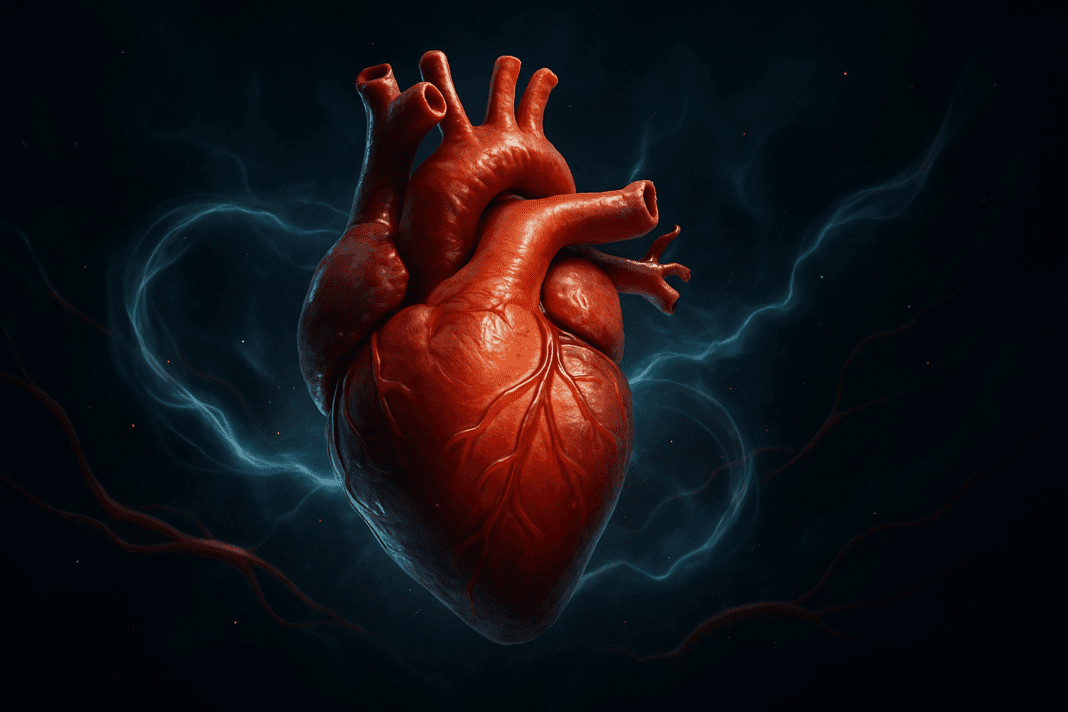The human heart is more than just a rhythmic organ that keeps us alive; it is a symbol of endurance, strength, and resilience. Often described metaphorically in terms of courage or emotion, the real biological heart is a powerhouse of muscular and electrical activity, capable of astonishing feats under physical and psychological stress. But how strong is the heart, really? To answer this question, we must move beyond metaphor and into measurable science. We must understand the physiological robustness of a healthy real human heart and explore how its strength underpins athletic performance, stamina, and overall cardiovascular health.
At the core of this exploration is the intersection of endurance and anatomy: how the heart adapts to challenges, recovers from strain, and supports the body in moments of extreme exertion. This article unpacks the science behind heart strength, offering insights from cardiology, exercise physiology, and performance medicine. We will also uncover the habits and practices that contribute to building and maintaining a healthy real human heart, and what this means for achieving peak physical potential.
You may also like: Smart Nutrition Choices for a Healthier Lifestyle: What to Know About Whole Grain Rice and Whole Wheat Rice
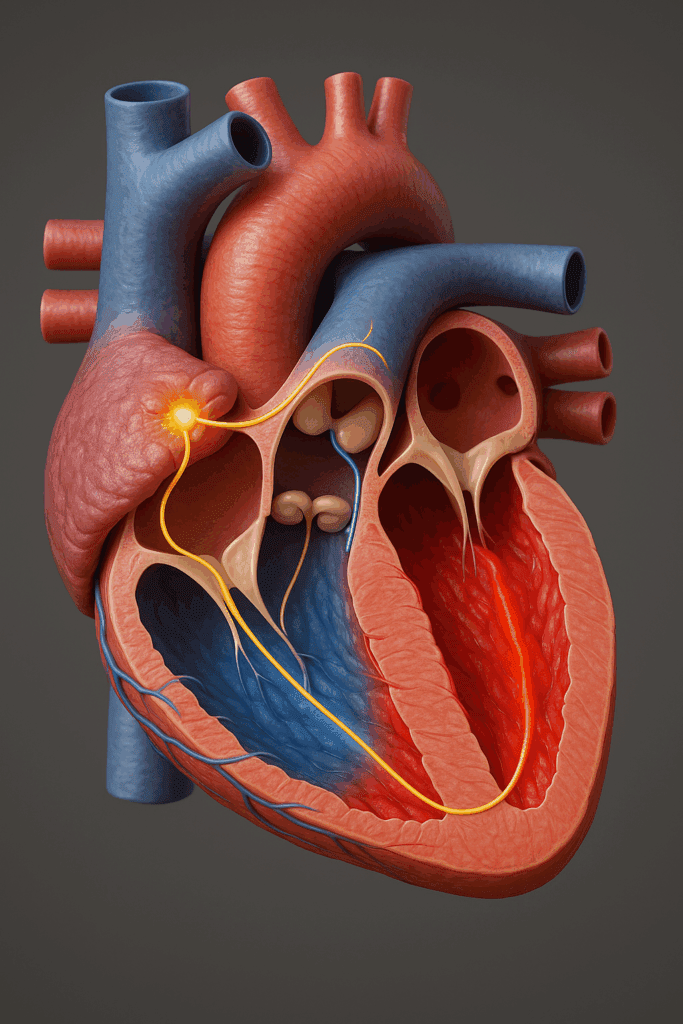
Understanding the Anatomy and Function of the Human Heart
To grasp the full extent of how strong the heart is, we must begin with its anatomy and core function. The heart is a four-chambered muscular organ—two atria and two ventricles—designed to circulate blood through a dual-loop system: the pulmonary circulation to the lungs and the systemic circulation to the rest of the body. Each beat involves a carefully timed contraction and relaxation cycle, known as the cardiac cycle, that ensures oxygenated blood reaches all tissues and organs.
The strength of the heart lies not just in its muscle mass but in the coordination of its electrical and mechanical systems. The sinoatrial (SA) node, often called the natural pacemaker, generates electrical impulses that initiate each heartbeat. This electrical activity travels through the atrioventricular (AV) node and down the bundle branches to coordinate contraction. The ability of the heart to generate, sustain, and modulate this activity is a direct measure of its strength and resilience.
Cardiac output—the volume of blood the heart pumps per minute—is a fundamental metric for assessing how strong the heart is. It depends on both stroke volume (the amount of blood pumped per beat) and heart rate. A healthy real human heart can increase its cardiac output dramatically during physical exertion, sometimes by 400 to 500 percent, depending on fitness levels. This capacity reflects both muscular strength and neurological efficiency.
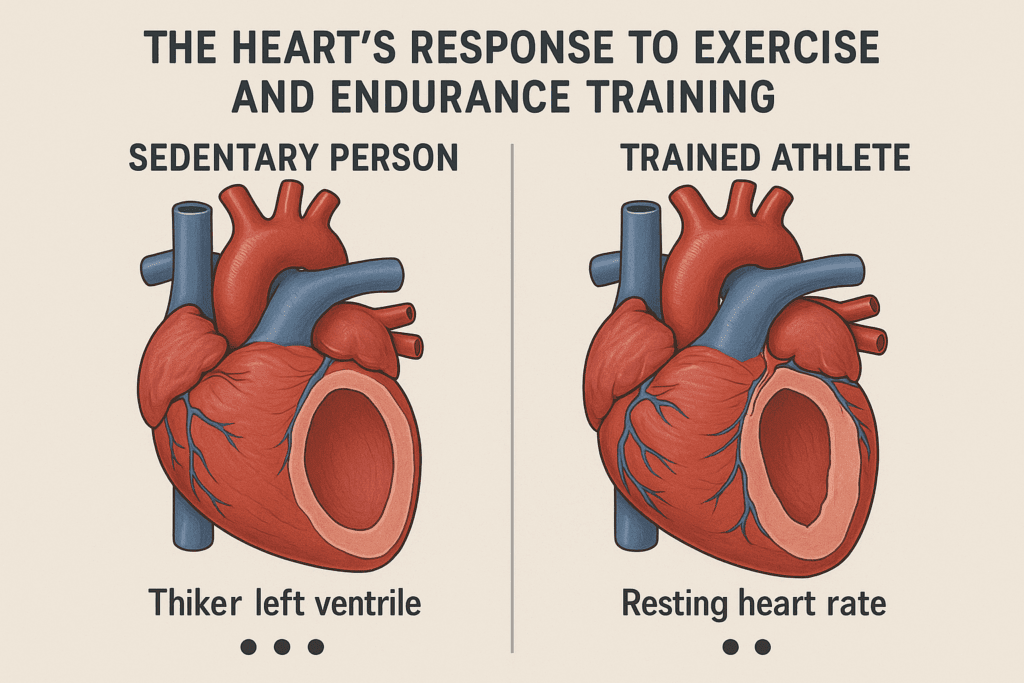
The Heart’s Response to Exercise and Endurance Training
One of the most telling signs of a strong heart is how it responds to physical stress. During exercise, the heart must work harder to meet the increased oxygen and nutrient demands of skeletal muscles. This increased demand triggers both acute and long-term adaptations in the cardiovascular system. In the short term, heart rate and stroke volume rise to increase cardiac output. Over time, regular endurance training prompts structural and functional changes in the heart itself.
These changes include left ventricular hypertrophy, where the walls of the heart’s main pumping chamber thicken slightly and increase in volume. This adaptation allows more blood to be ejected with each beat, reducing the need for a high heart rate during exertion. A trained athlete’s resting heart rate may drop significantly—a clear indicator of cardiac efficiency. These structural enhancements are hallmarks of a healthy real human heart that has been conditioned for performance.
In high-level endurance athletes, such as marathon runners or professional cyclists, the heart becomes a marvel of biological engineering. Its strength isn’t solely about raw power; it’s also about how efficiently it can perform with minimal strain. This efficiency becomes crucial not just for athletic performance but also for long-term cardiovascular health. Studies have shown that individuals with high cardiorespiratory fitness are at lower risk for a range of conditions, including hypertension, atherosclerosis, and heart failure.
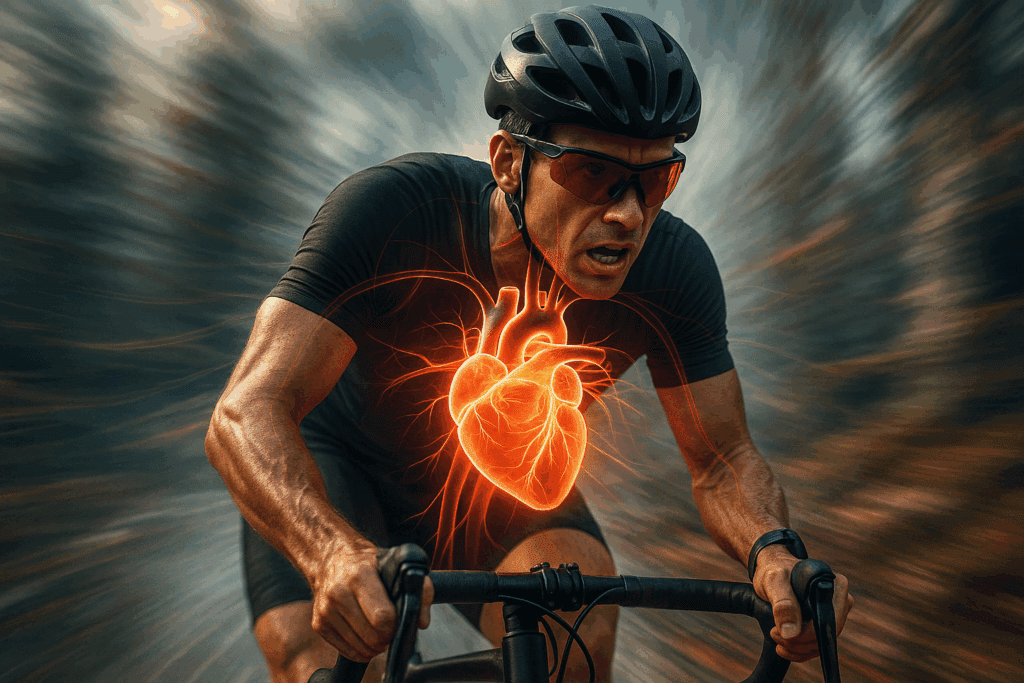
How Cardiac Strength Supports Peak Physical Performance
Peak physical performance hinges on many factors—muscular strength, respiratory efficiency, mental focus—but the heart is the engine that drives them all. When asking, “How strong is the heart?” in the context of elite athleticism, the answer lies in its ability to maintain high output with low fatigue, to recover quickly, and to adapt to changing conditions. A healthy real human heart is defined not just by its output during activity, but also by its recovery rate afterward.
Recovery heart rate—how quickly the heart slows down after exercise—is an important indicator of heart health and resilience. A rapid return to resting heart rate suggests a well-conditioned cardiovascular system. Conversely, a sluggish recovery may point to underlying dysfunction or deconditioning. For competitive athletes, tracking this metric can offer insights into training efficacy and overtraining risk.
The ability to sustain elevated heart rates without signs of ischemia (inadequate blood flow) or arrhythmia is another hallmark of cardiac strength. During intense performance, the heart may beat 180 to 200 times per minute, pumping more than 30 liters of blood each minute. Only a heart that has been meticulously trained and maintained can endure such loads without breaking rhythm. That is the essence of a strong heart—a system that meets extreme demand with grace and consistency.
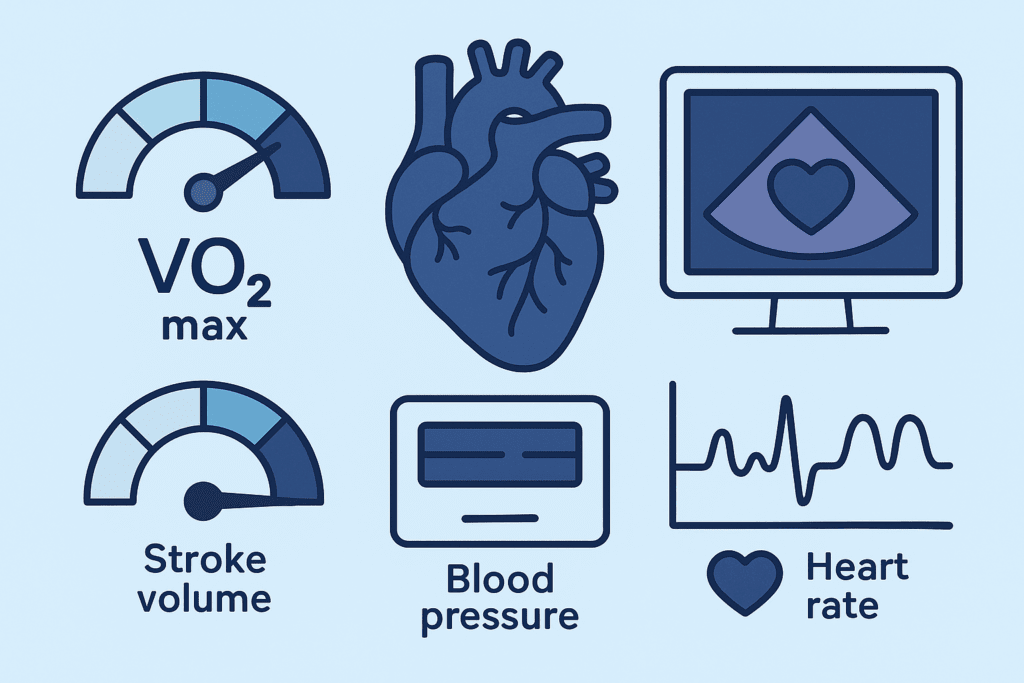
Cardiovascular Biomarkers and Measuring Heart Strength
While heart rate, stroke volume, and cardiac output are standard metrics for heart function, there are more refined biomarkers used to evaluate how strong the heart is. One key marker is VO2 max, or maximal oxygen uptake. It reflects how efficiently the heart, lungs, and muscles work together to deliver and use oxygen. VO2 max is often used as a proxy for cardiovascular fitness and has strong correlations with overall heart strength.
Another useful tool is echocardiography, which provides a real-time image of heart structure and function. Through echocardiograms, clinicians can assess left ventricular ejection fraction (LVEF), wall motion, and chamber size—all essential indicators of cardiac performance. A healthy real human heart will exhibit balanced wall motion, optimal ejection fraction (typically above 55%), and normal chamber dimensions.
Blood pressure, although a common metric, also offers insight into heart strength. High blood pressure places additional strain on the heart, forcing it to work harder with each beat. Over time, this can weaken the myocardium and reduce efficiency. Monitoring resting blood pressure and understanding how it changes with stress or exercise can reveal subtle shifts in cardiac performance that may otherwise go unnoticed.

The Role of Nutrition and Lifestyle in Supporting a Strong Heart
No discussion of heart strength would be complete without considering the foundational role of lifestyle and nutrition. A healthy real human heart is not only the result of good genes and regular exercise but also of consistent and heart-conscious daily habits. Nutrition plays a particularly vital role in shaping cardiovascular function.
Diets rich in omega-3 fatty acids, antioxidants, potassium, and fiber help reduce inflammation, lower cholesterol, and regulate blood pressure—all of which contribute to long-term cardiac resilience. Conversely, excessive intake of trans fats, sodium, and refined sugars can stiffen arteries, increase plaque buildup, and burden the heart with added strain. The Mediterranean diet, DASH diet, and other heart-smart eating plans have shown remarkable results in improving cardiovascular outcomes and reducing cardiac events.
Sleep quality, stress management, and avoidance of tobacco and excessive alcohol are equally critical. Chronic sleep deprivation and high stress levels elevate cortisol and adrenaline, increasing heart rate and blood pressure. Over time, this sustained activation of the sympathetic nervous system can lead to hypertension and arrhythmias. By contrast, practices like mindfulness, yoga, and adequate sleep foster a calm autonomic tone and allow the heart to recover and grow stronger.
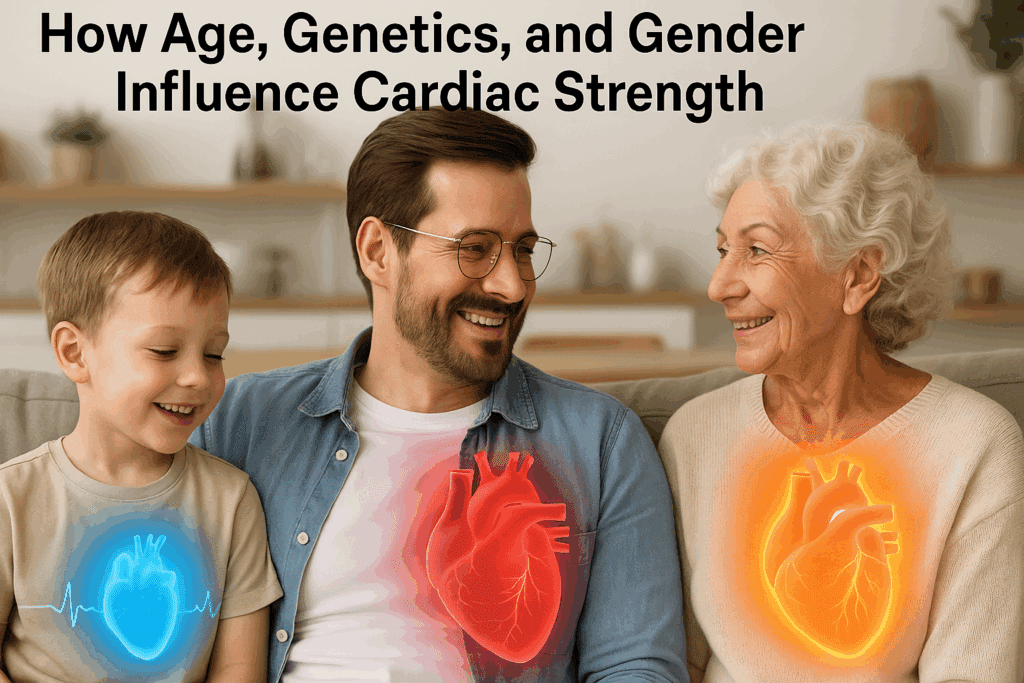
How Age, Genetics, and Gender Influence Cardiac Strength
Although we often discuss heart strength in terms of modifiable factors, it’s important to recognize the influence of age, genetics, and gender on cardiac performance. As we age, the elasticity of blood vessels decreases, and the heart’s maximum pumping capacity may decline. These changes are natural but can be mitigated through consistent physical activity and lifestyle optimization. Even in older adults, endurance training has been shown to increase VO2 max and enhance cardiac output.
Genetics also play a significant role in determining baseline heart function. Some individuals are born with a naturally higher stroke volume or greater myocardial contractility, giving them a physiological edge in endurance activities. However, genetics do not determine destiny. Many aspects of heart strength can be cultivated through training and care, regardless of one’s starting point.
Gender differences also emerge in cardiovascular research. For example, women tend to have smaller heart chambers and lower hemoglobin levels, which can slightly reduce their maximal oxygen-carrying capacity. Yet women also tend to have greater parasympathetic tone, which supports better heart rate variability and recovery. These physiological distinctions do not imply superiority but highlight the need for gender-specific strategies in training and cardiac care.
Heart Rate Variability and Its Role in Measuring Resilience
Among the most advanced metrics in modern sports and health monitoring is heart rate variability (HRV)—a measure of the variation in time between each heartbeat. While it may sound counterintuitive, higher variability is actually a sign of a strong and adaptable heart. HRV reflects the balance between the sympathetic and parasympathetic nervous systems and is influenced by sleep, stress, nutrition, and training load.
A healthy real human heart doesn’t beat like a metronome; instead, it subtly adjusts its rhythm to match the demands of the moment. This flexibility is critical for adapting to stressors and recovering efficiently. High HRV is associated with better stress resilience, improved athletic performance, and reduced risk of cardiovascular disease.
Wearable devices now allow athletes and health-conscious individuals to track HRV in real time, offering a powerful feedback loop for lifestyle management. If HRV drops, it may indicate overtraining, poor sleep, or an oncoming illness. If it rises, it suggests recovery, adaptation, and strength. As such, HRV has become an essential tool for understanding how strong the heart is—not in terms of brute force, but in nuanced adaptability.
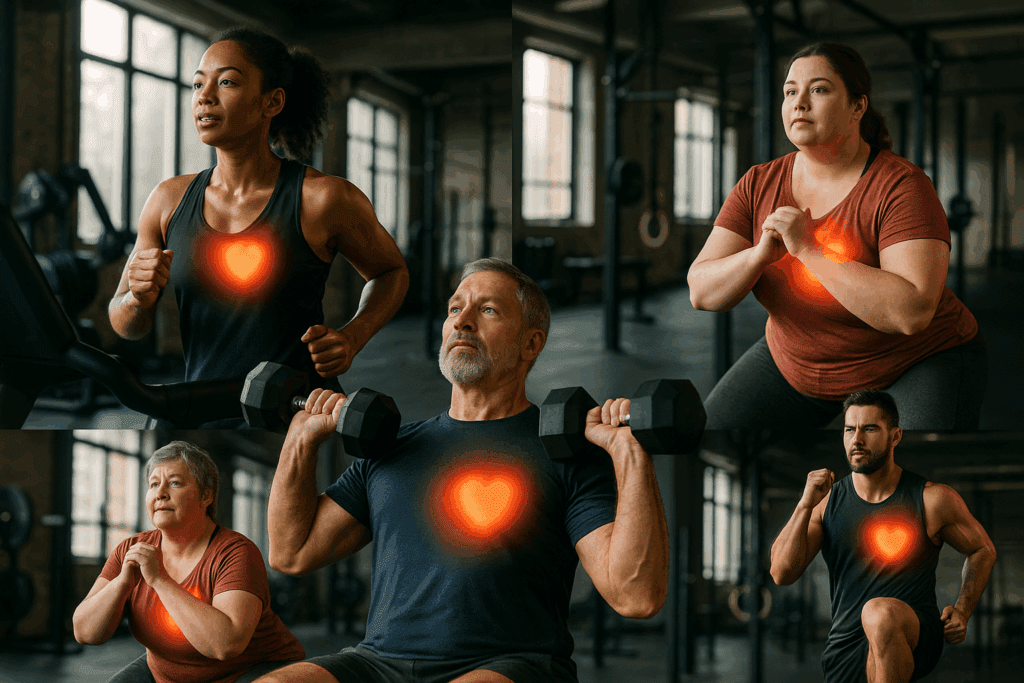
Training Techniques to Build a Stronger Heart
Building a stronger heart is not solely the domain of elite athletes. Anyone can take steps to improve cardiovascular strength through structured, intentional training. Aerobic exercise remains the cornerstone, with activities like running, swimming, cycling, and rowing offering the most direct benefits. These workouts increase heart rate and stroke volume over sustained periods, training the heart to perform more efficiently.
Interval training, or high-intensity interval training (HIIT), has also gained traction for its cardiovascular benefits. Short bursts of intense effort followed by periods of rest challenge the heart to accelerate and decelerate repeatedly, enhancing both aerobic and anaerobic capacity. This form of training has been shown to significantly increase VO2 max and improve endothelial function.
Strength training, while not traditionally considered heart-focused, plays an important supportive role. Building muscle mass helps regulate blood sugar and reduces fat stores, which in turn reduces cardiovascular risk. Moreover, the transient rise in blood pressure during resistance training provides a unique stimulus that can enhance vascular flexibility and resilience when incorporated safely.
FAQ: Understanding the Strength and Resilience of the Human Heart
1. Can emotional resilience actually impact how strong the heart is? Yes, emotional resilience can have a profound influence on cardiovascular health. Chronic stress, anxiety, and unresolved emotional trauma can disrupt autonomic nervous system balance, which affects heart rate variability and blood pressure regulation. A person who consistently practices emotional regulation, mindfulness, or gratitude is likely to experience improved parasympathetic tone, which supports cardiac function. Interestingly, individuals who recover quickly from emotional setbacks often show greater heart rate variability—an advanced marker of how strong the heart is in real-time adaptation. While emotional wellness alone doesn’t determine cardiovascular output, it plays a significant role in maintaining a healthy real human heart under mental and social pressures.
2. Are there occupational factors that affect how strong the heart is? Absolutely. Occupations that involve long hours of sitting, chronic stress, or disrupted sleep patterns—such as night-shift work—can reduce cardiovascular efficiency over time. Sedentary roles are especially concerning because they diminish physical conditioning, which is essential for maintaining a healthy real human heart. On the other hand, physically demanding jobs can support cardiovascular strength, but only when balanced with recovery and proper ergonomics. First responders and athletes, for instance, may display signs of enhanced cardiac output due to both physical readiness and high stress resilience. However, all occupations benefit from intentional efforts to support cardiac health through exercise, hydration, and scheduled movement throughout the day.
3. How does altitude training influence heart strength and performance? Training at high altitudes, where oxygen levels are lower, can stimulate physiological adaptations that benefit the heart. The body responds by increasing red blood cell production, enhancing oxygen delivery capacity and improving endurance. This forces the heart to become more efficient over time, as it learns to deliver more oxygen-rich blood with less effort. For athletes and mountaineers, these adaptations demonstrate how strong the heart is in overcoming environmental challenges. When transitioned back to sea level, those who train at altitude often exhibit superior aerobic performance—a testament to the adaptability of a healthy real human heart.
4. Does pregnancy have a lasting impact on heart strength? Pregnancy creates one of the most dramatic cardiovascular challenges a body can face. Blood volume increases by nearly 50%, and cardiac output must rise to accommodate both the mother and growing fetus. This forces the heart to strengthen and adapt rapidly. Postpartum, many women retain improved stroke volume and cardiac conditioning, especially if they remained active during pregnancy. This unique life stage offers a powerful view of how strong the heart is when it must meet escalating demands—and how a healthy real human heart is capable of expanding its limits with proper support.
5. How do psychedelics or meditation alter the heart’s resilience? Emerging research on psychedelics, particularly psilocybin and MDMA, shows potential in resetting autonomic balance and reducing chronic sympathetic nervous system activation. Similarly, deep meditation can promote high heart rate variability and reduce resting heart rate—markers of a more adaptive cardiovascular system. These altered states of consciousness, when guided and used responsibly, may indirectly reveal how strong the heart is by reducing psychological barriers to physical performance. Though not a direct substitute for exercise or nutrition, these practices may support the development of a healthy real human heart by easing chronic stress patterns. The implications for long-term cardiovascular resilience are still under investigation but look promising.
6. Can biofeedback training actually enhance heart strength? Yes, biofeedback—especially HRV (heart rate variability) biofeedback—has been shown to improve autonomic control and cardiac efficiency. Through sensors and guided breathwork, individuals learn to synchronize their breathing and heart rhythms, effectively increasing parasympathetic activity. Over time, this not only enhances perceived well-being but also shows measurable cardiovascular improvements. Those practicing biofeedback can witness firsthand how strong the heart is when consciously directed toward coherence and regulation. This self-directed strategy supports the sustainability of a healthy real human heart by giving users a tangible way to train inner resilience.
7. How do endurance sports like ultra-marathons affect long-term heart health? Endurance sports push the cardiovascular system to its limits, often for hours or days at a time. While these athletes exhibit incredibly strong cardiac output and low resting heart rates, there is ongoing debate about the potential wear-and-tear of chronic ultra-endurance stress. In some individuals, excessive endurance racing may lead to cardiac remodeling or atrial fibrillation later in life. That said, a healthy real human heart is remarkably adaptive and often recovers well when training includes sufficient recovery periods. Balancing high-output exertion with medical screening and smart tapering protocols ensures long-term cardiovascular integrity, even in extreme athletes.
8. How does fasting or intermittent fasting influence heart strength? Fasting can trigger metabolic adaptations that benefit cardiovascular function. During fasting periods, insulin levels drop, inflammation may decrease, and the body shifts toward fat utilization—all of which reduce stress on the heart. Some studies also suggest improvements in blood pressure, lipid profiles, and endothelial function after extended fasting protocols. These benefits help answer how strong the heart is when unburdened by constant digestive activity and erratic insulin spikes. For those following intermittent fasting lifestyles, the result is often a more efficient and metabolically healthy real human heart, though it’s essential to balance fasting with nutrient-dense eating windows.
9. What role do gut microbiota play in determining how strong the heart is? Though seemingly unrelated, gut health plays a pivotal role in cardiovascular resilience. Imbalances in the microbiome can contribute to systemic inflammation, elevated blood pressure, and even arterial plaque formation. Specific gut bacteria help regulate nitric oxide production, which is crucial for vascular dilation and blood flow. A thriving gut ecosystem indirectly strengthens cardiac output by minimizing inflammatory load and enhancing nutrient absorption. In this way, maintaining gut health becomes an unconventional but vital aspect of supporting a healthy real human heart and optimizing how strong the heart is over time.
10. Are there technologies emerging to measure heart strength more precisely? Yes, advancements in wearable technology and AI-driven diagnostics are revolutionizing how we measure cardiac performance. Devices that monitor continuous HRV, blood pressure variability, and oxygen saturation offer deeper insights than traditional snapshots of heart rate. Machine learning is also being used to predict cardiac events based on pattern recognition from long-term data streams. These tools help individuals understand how strong the heart is in dynamic contexts—during sleep, stress, travel, or illness. As these technologies evolve, they promise to give us more real-time feedback on what it means to support and maintain a truly healthy real human heart.
Conclusion: The Enduring Power of a Healthy Real Human Heart
So, how strong is the heart? It is stronger than most people realize—capable of beating over 100,000 times a day, adjusting instantaneously to stress, and adapting over years to support performance and longevity. A healthy real human heart is not simply defined by its ability to pump blood; it is a reflection of our choices, training, and overall well-being. It is the central engine of our lives, and its condition determines how far we can go, how fast we can recover, and how long we can thrive.
Understanding the full capabilities of the heart reveals just how much potential lies within us when we take care of this vital organ. Whether you’re an elite athlete striving for peak performance or an individual seeking greater health and vitality, investing in your heart is investing in your future. By honoring its strength, supporting its health, and respecting its signals, we empower ourselves to live longer, perform better, and experience life more fully with every beat.
Was this article helpful? Don’t let it stop with you. Share it right now with someone who needs to see it—whether it’s a friend, a colleague, or your whole network. And if staying ahead on this topic matters to you, subscribe to this publication for the most up-to-date information. You’ll get the latest insights delivered straight to you—no searching, no missing out.
Further Reading:
Analysis of Heart Rate Variability and Implication of Different Factors on Heart Rate Variability
Exploring the Fitness and Longevity Implications of a Low Resting Heart Rate

